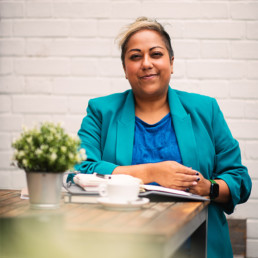
Written by Bennie Kara
Co-Founder of Diverse Educators
Sometimes it feels like the world genuinely believes that racism is something that doesn’t *really* exist. Or if it ever did, it is something that you find in the pages of a history book.
But it’s not true, is it?
Over coffee the other day, my friends and I spoke in disbelief about the fact that anti-semitism actually exists. It was almost as if we couldn’t comprehend that people still hold beliefs about Jewish people that come from ancient and medieval ages. Disbelief that the politicians we look to might also hold those beliefs. The ridiculousness of it had us laughing. But for one of my friends, it wasn’t even remotely funny. She’s Jewish.
I shouldn’t be surprised. In teaching, you only need to scratch the surface of any school environment to hear and see things that make a snowflake like me clutch my chest in horror.
You want to hear?
“I don’t want to study RS. I don’t want to learn about ninja warriors and postboxes.” Child, it turns out, was referencing Muslim women.
“How am I racist? My mother uses those words all the time. Even my dad says they are ninja warriors.” Child, on explanation that terms used might be offensive.
“There are too many Paki shops in X.” Child, referencing local area.
“He looks like the underside of a shoe.” Child, referencing a black peer.
“His house smells like black people.” Child, referencing a black person’s home.
“I’m not being racist by using the ‘n’ word. I’ve got a black pass.” Child, explaining that he can use the ‘n’ word because he has asked his black friend for a ‘pass’ to use it.
“I called him a terrorist. Because he has a name that terrorists have.” Child, speaking about a Muslim peer.
It goes on. These are recent. From different sources, but recent. And yes, children misunderstand and say things they shouldn’t because they don’t know any different, but if we fail to challenge comments like these, what’s next?
Negative perceptions about race are so embedded in our society that the dialogue about race in schools has to be open and frank.
So, what do we do?
- Don’t shy away from calling out racism and sanctioning. Children and the adults in their lives need to know what the red lines are.
- Explain the impact of the terminology. It helps if you have BAME staff to reference (and I know lots of schools outside major urban centres don’t).
- Pre-empt racism by referencing BAME history and culture in the curriculum. If no one knows anything about Islam other than what’s in the mainstream media, racism will proliferate.
- Visibly value difference. Embed openness and equity into the culture of the school.
- Address common misconceptions – actively deconstruct racist phrases or ideas. Don’t be timid.
Timidity and tiptoeing around the issue doesn’t change societies. Only head on discussion can do that. Let me know how it goes.

